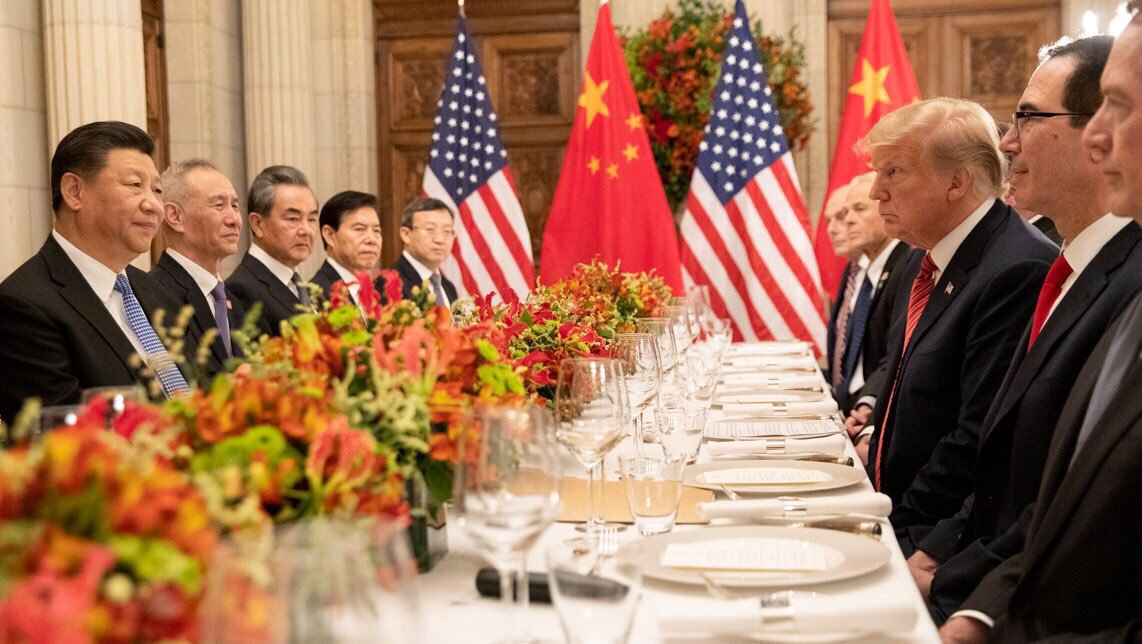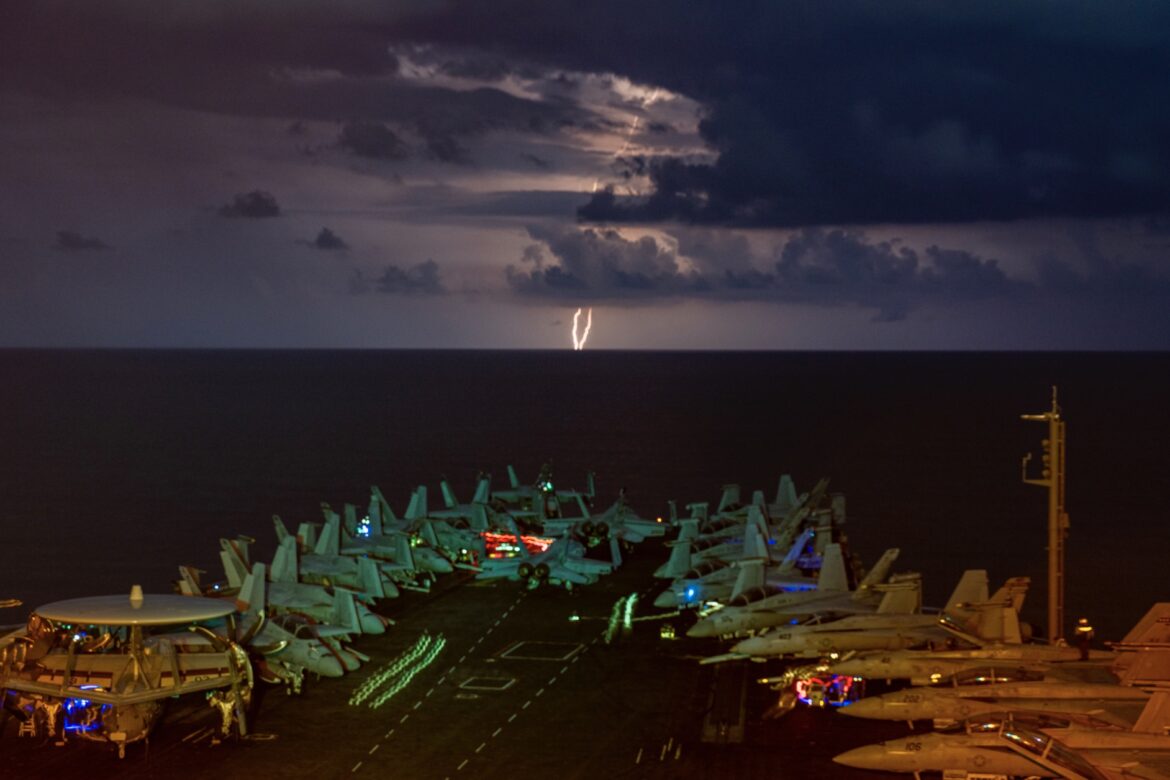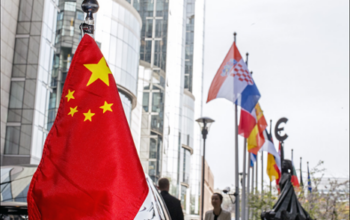It seems that there is a consensus forming that is as rare as snow in the Sahara, shared by right and left-wing media outlets, among academic circles, and military strategists alike: Relations between the US and China are becoming increasingly sour, and if something is not done to change course, they might enter a collision course that culminates in armed conflict. Voices from the right of the political spectrum cite China’s expansion into the South China Sea and enhanced military power as proof of the threat, whilst leftwing voices point towards the US’s trade wars, and increasing nuclear stockpile. The discourse surrounding China/US relations is nothing if not foreboding, but it is supported by a questionable theory which represents deteriorating relations as a predictable and unavoidable event in the cycle of global hegemonic powers.
Long cycle theory, developed by the Polish political scientist George Modelski, is a way of explaining the relationship between economic and political supremacy, and cycles of great power conflict. It is predicated on the logic that the relative stability of the international order since 1945, a period the Historian John Lewis Gaddis termed ‘the long peace’, is maintained by the presence of the US as the global hegemon. But according to long cycle theory, this long peace is coming to an end.
Since the 1600’s each period of relative global peace has been maintained by the presence of a hegemonic power which on average lasts around 70-100 years. At the end of this period there is a process of delegitimisation and decline of the hegemonic power, followed by the rise of a challenger, and great power conflict. Thus, the next cycle begins, with another hegemon. According to Modelski, there have been five cycles since the 16th century. Portugal emerged as the hegemonic power in the 16th century proceeding the Indian oceanic wars from 1496-1516. After the Spanish-Dutch wars at the end of the 17th century, it was overtaken by the Netherlands which, in turn, was proceeded by the wars of Louis XIV and the emergence of the UK as hegemon in the 18th and 19th century. Then begins the more familiar story: World War 2 upsets the global order and the US takes its place as the hegemon after 1945 until today.
You will see why the prospect of great power conflict between the US and China has garnered such attention when it is viewed as the inevitable time bomb waiting at the end of this cycle. 76 years have passed since 1945, roughly the length of one cycle and the BBC predicts that China might overtake the US as the global economic power in 2028, five years earlier than previously thought, due to the global coronavirus pandemic. The question therefore becomes: What will happen when this transition of power takes place? Is conflict between the US and China inevitable at this point?
Much of the frantic media and military discourse has already shared predictions in line with long cycle theory. Just to name a notable few, Shi Jiangtao, writing in the South China morning post that ‘there is a growing risk of an unplanned confrontation as relations unravel at unprecedented speed’ whereas journalists writing in the left-leaning Guardian warn that the US and China are entering a ‘new cold war’. Christopher Layne, professor of foreign affairs at Texas A&M University predicts that war between the US and China ‘in the coming decades is not only possible but probable’, and an editorial in the New York Times suggested that with Biden in the white house, ‘China wants to lead a new world order’.
The US’s military strategy seems to echo these sentiments, with the 2020 US defense report regarding China stating that ‘the PRC’s (People’s Republic of China) national strategy and military aspirations will have serious implications for US national interests’. The way that China and the US relate to one another both in long cycle theory and in the wider discourse is framed as fundamentally antagonistic. The problem is that this kind of thinking is highly oversimplified, deterministic, and predicated upon an outdated and incomplete view of human nature.
Within long cycle theory war is not just probable, it is, in Modelski’s words a ‘natural product of the long cycle’ that is ‘part of the living processes of the global polity and social order’. The end of each cycle of hegemonic power, and the chaos and conflict that follow are represented as predetermined, a ‘systemic decision’. The glaring problem with this is that it denies any agency to geopolitical actors, or indeed to ourselves to stop this outcome. Following this reasoning, no changes in government, large scale protest, or new legislation will stand in the way of this dark prophecy, because the outcome is historically determined. It necessitates the logic that not only is agency absent from these cycles, but that none of the changes that occurred in-between cycles will have any effect on the outcome.

The rise of globalized capitalism, the advent of international law, and the proliferation of powerful non-state actors are simply not considered to be variables. Furthermore, long cycle theory is built upon outdated assumptions about human nature that seem untenable to many: The belief that humans, no matter their cultural and ethnic background are inherently selfish beings that, given the chance, will try to dominate others, and the only way to oppose being dominated is to dominate. It is an ideology that is predicated on paranoia and suspicion of the other because like us, they are only looking out for their own interests. Furthermore, if one opposes this mode of thinking, they are living in a dream world, unwilling to accept the inherent ugliness and reality of the world as it is today. Within this discourse, there is no alternative, and the possibility of hope that things could be different is represented as a dangerous illusion.
All of this makes it a highly flawed model, but that does not make its underlying assumptions any less attractive to political and military actors. By adhering to its structural determinism, the model absolves political leaders from any kind of responsibility to reduce the size of their military budget and act in accordance with the nuclear non-proliferation treaties signed after the cold war. Long cycle theory is the trump card in terms of realist military strategy that allows foreign policy hawks to claim innocence whilst spending vast amounts of money on amassing even greater militaries. ‘It isn’t our fault’, the standard defense goes, ‘we would love to reduce our nuclear stockpile, but the decision is simply out of our hands’. There is certainly irony in the idea that the kind of self proclaimed ruthless pragmatists that deny the historical determinism of Marx’ writing are more than happy to be caught up in a process that denies them a place in the driver’s seat of history.
We can expect this kind of ‘mine’s bigger than yours’-style nuclear posturing from states, but what is concerning is the degree to which the media seem to be complicit in the idea that great powers are fundamentally adversarial, and each of them will turn to violence at the drop of a hat. Knowingly or not, much of the media discourse has blithely accepted the pessimistic assumptions about human nature and an unshakable belief in historical determinism that theories like long cycle theory are built on.
It is neither that the US and China are or have the possibility to be inherently benevolent buddies, nor are they inherently adversarial. The point is that the nature of their relationship is produced through representations disseminated in the media that in turn affects perceptions of their relationship that serve to inform state actions. The representation on offer in 2021 is a casual acceptance of a zero-sum game that starves alternative explanations or solutions of oxygen. At its worst, this discourse takes away our ability to honestly evaluate the complex geopolitical polities of the US and China in all their imperfections and achievements, and turns the debate into an issue of us vs them, eat or be eaten. This is precisely because long cycle theory and the militarized discourse which supports it leaves no room for alternatives. Whether China or the US is viewed as the problem is of less importance, what matters is that from left to right the outcome of a transition of power is seen to pose an existential threat to peace.
Is this really the kind of discourse that should be reproduced? A point of view that sees the next human produced catastrophe as something not only likely, but inevitable, and outside of our control? The term ‘sleepwalking into war’ is often used in this context for a reason. It represents a mode of thinking that says we don’t yet know what the spark will be, nor exactly when it will come, but like an erratic drunk, it will only take one prod to begin the domino effect that leads to war. When an event takes place that causes tensions to rise between US and China, that causes grief and anger amongst their populations and nervousness among their leaders, long cycle theory and the discourse that tacitly supports it simply does not have the vocabulary to explain how states would intervene to de escalate tensions, redirect anger, and put creative human agency to work on finding a solution.
Related articles:
International Relations Theory: An Interview with Barry Buzan
The Tension of Action & Theory
Photo credits:
Lightning flashes over the South China Sea in front of USS Nimitz (CVN 68) by John Philip Wagner, Jr./Released, via Official U.S. Navy Page on Flickr, CC BY 2.0
US and PRC delegation at the 2018 G20 Buenos Aires Summit, by Dan Scavino, Public domain via Wikimedia Commons





